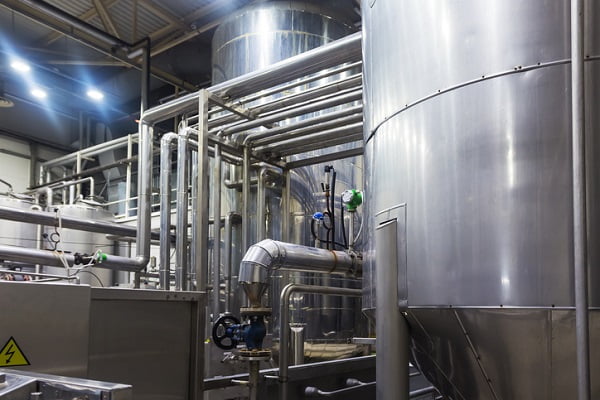Common Enclosure Cooling Mistakes in the Food and Beverage Industry
To the outsider, the food and beverage industry operates in a benign and clean environment. Although this assumption is largely true, it requires that facilities are rigorously cleaned and high standards of hygiene maintained. Cleaning processes include the use of chemical disinfectants and washdowns to prevent pathogens accumulating on any surface. Since the introduction of the Food Safety Management Act, the FDA Code of Federal Regulations Title 21, Part 110 was updated and requires that equipment in manufacturing and food handling areas is constructed so it can be kept in a clean condition, even if it doesn’t come into direct contact with food.
Because the impact of these requirements is not always fully understood, several electrical enclosure cooling mistakes are common.
Inadequate Corrosion Protection
Cleaning chemicals used include caustic soda, sodium carbonate and various acidic and alkaline substances. To some degree, these are corrosive so it’s important that parts coming into contact with these chemicals are corrosion-resistant. Although powder coating offers some resistance to corrosion, in the long term, stainless steel is far superior. Condenser coils are usually made of copper. While copper resists corrosion, it can occur, especially at brazed joints. Corrosion can be prevented by using silver-solder brazing and protecting copper coils with an electrostatically applied epoxy coating. An electrostatically applied coating, also known as an e-coat, ensures complete surface coverage of the entire condenser coil.
Difficult-To-Clean Surfaces
Complex surface profiles may look attractive but are hard to clean. This applies equally to high-pressure water cleaning and hand cleaning. The external surfaces of enclosure coolers should be smooth and highly polished with a number 4 sanitary surface finish. Top surfaces should be sloped to avoid the accumulation of water that could encourage bacterial growth and, ideally, there should be a minimum of exposed seams.
Easy to clean, washable, stainless steel filters should be fitted to prevent mold growth, and cooling louvers should be large with smooth edges so they can be easily cleaned.
Insufficient Cooling
The most common reason of equipment overheating is insufficient electrical enclosure cooling. The internal temperature of an electrical enclosure is directly related to the heat load and the capacity of the cooling system. If cooling is inadequate, the internal temperature will rise significantly and the consequences are unexpected equipment failure and equipment malfunction. Enclosure cooling design should be based on a methodical approach that takes into account the heat load of the equipment as well as all external factors.
Wrong Ambient Temperature Assumption
It’s surprising how often plant personnel don’t fully understand the implications of high ambient temperature, nor do they know how hot their food manufacturing plant gets in summer. The air temperature inside an electrical enclosure is directly related to the ambient air temperature, especially if the electrical enclosure cooling solution is a filtered fan or an air to air heat exchanger, which removes heat but does not actively cool the enclosure. Although enclosure air conditioners provide some latitude, their efficiency is compromised at high ambient temperature, so they may have insufficient cooling capacity.
It’s essential the maximum ambient air temperature in the location where the electrical enclosure is installed is determined by measurement and by reference to climate records, or it’s almost certain that the assumed ambient temperature will be too low.
Incorrect Enclosure Rating
The electrical enclosure cooling equipment should have the same NEMA rating as the electrical enclosure it’s fitted to. In the past, before it was necessary to thoroughly clean all equipment within the food manufacturing or handling area, it’s quite possible that the enclosure rating would have been NEMA 12 or possibly a NEMA 4. Although both ratings are for sealed enclosures, a NEMA 12 enclosure cannot withstand hose-downs and both don’t have the required corrosion protection. In food and beverage areas, where aggressive washdowns are performed, the electrical enclosure and the enclosure cooler should have a NEMA 4X rating that prevents water ingress, even from a high-pressure hose, and provides excellent corrosion resistance.
Get Professional Help
Electrical enclosure cooling requirements within food and beverage plants are complicated by the need to adhere to food manufacturing regulations. It’s quite possible mistakes have been made because plant personnel were not fully conversant with how these regulations affect the design and installation of enclosure cooling solutions. If this applies to you, contact our experienced Sales Team for technical assistance to bring your enclosure cooling solutions up to standard.


